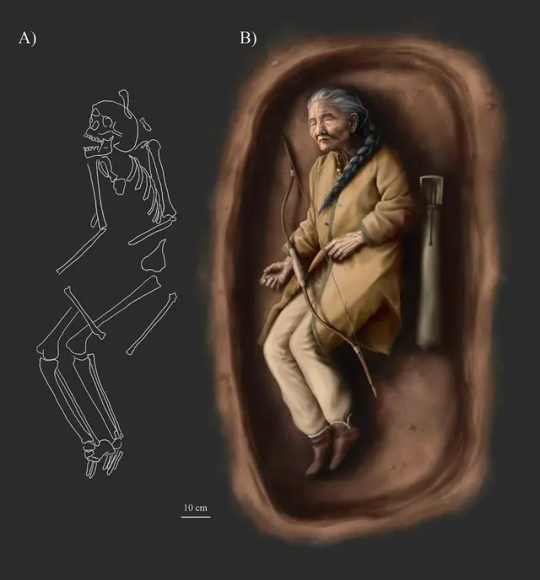#tbh i'd love to find solid evidence of women warriors anywhere and everywhere! i'm very open to the likelihood of it
Explore tagged Tumblr posts
Text
Unfortunately in search of headlines archaeologists have switched to doing a different kind of if -> then, hinted at in the original post though never actually addressed by it. If weapons -> then warrior is actually no methodologically more sound than if weapons -> then male. This is what the pushback on the reassessed 'Viking warrior woman' grave was about. None of the academics I know have any ideological problem with the existence of women warriors in the viking age, but the reassessment of this grave still does not offer proof of this woman's role in her society (caveat: I haven't read any Price since the 1st ed of The Viking Way, and I know he knows his stuff, but I also know that historians and literary scholars find his use of much, much later written sources as evidence to be unconvincing at times). Often, as in this Hungarian case, the preservation of the bones is not good enough to tell you whether that person had the kind of wear and old injuries you might expect from 'a warrior' - and I expect such things are understudied even in male burials because of the assumptions outlined above, where no one felt the need to examine things more closely when they found weapons and went if weapons -> then warrior -> then male.
It's great that we're looking more deeply at the evidence now and discovering more incredible high-status female burials, but the interpretation remains on unstable ground and in most cases likely always will.

Archaeologists identified the first known tomb of a Warrior Woman with weapons in Hungary - arkeonews
A team of archaeologists led by Balázs Tihanyi of the Department of Biological Anthropology and the Department of Archaeology at the University of Szeged, and the Department of Archaeogenetics at the Institute of Hungarian Research, dated the first known female burial with weapons in the Sárrétudvari-Hízófóld Cemetery in Hajdú-Bihar County, Hungary, to the 10th century, the period of the Hungarian Conquest.
From the Eurasian steppes, the Maygars (Hungarians) migrated to the Lower Danube region circa 830 AD. By the late 9th or early 10th century, they had arrived in the Carpathian Basin. The Kingdom of Hungary was established at the end of the tenth century after they quickly gained control of the region. In the Carpathian Basin and in battles throughout much of the rest of Europe, Hungarian mounted archers established a formidable reputation during this period. During this time, it is common to find warriors buried with various weapons, such as composite bows, arrows, quivers, bow-cases, axes, spears, sabres, swords, and swords with sabre hilts.
However, the existence of female burials with weapons has always been a topic of great interest and debate for scholars and the general public. These graves are difficult to interpret because finding weapons in a female burial site does not automatically equate that woman with a warrior.
In the study published in Plos One, archaeologists conducted both morphological and genetic analyses to determine whether the individual was female. Despite the skeleton’s poor preservation, the skull and genetic markers from different regions in the body indicated the interred was a female.
#i realise archaeologists can be better at this nuance than it often seems from newspaper reports#e.g. the work of lesek gardela on female burials in the viking diaspora esp. poland is in my experience good at acknowledging limitations#on our analysis. and i would hope price is the same but he does have a tendency to get carried away...#tbh i'd love to find solid evidence of women warriors anywhere and everywhere! i'm very open to the likelihood of it#but viking warrior woman-gate still haunts me. like.#oh she has weapons so she's a warrior she has a chess board so she's a military strategist#now turning to this saga written four hundred years later in a completely different country...#like yeah buddy oral tradition is a thing but we've agreed it doesn't work like that for over a century now#i am a medievalisn't
215 notes
·
View notes